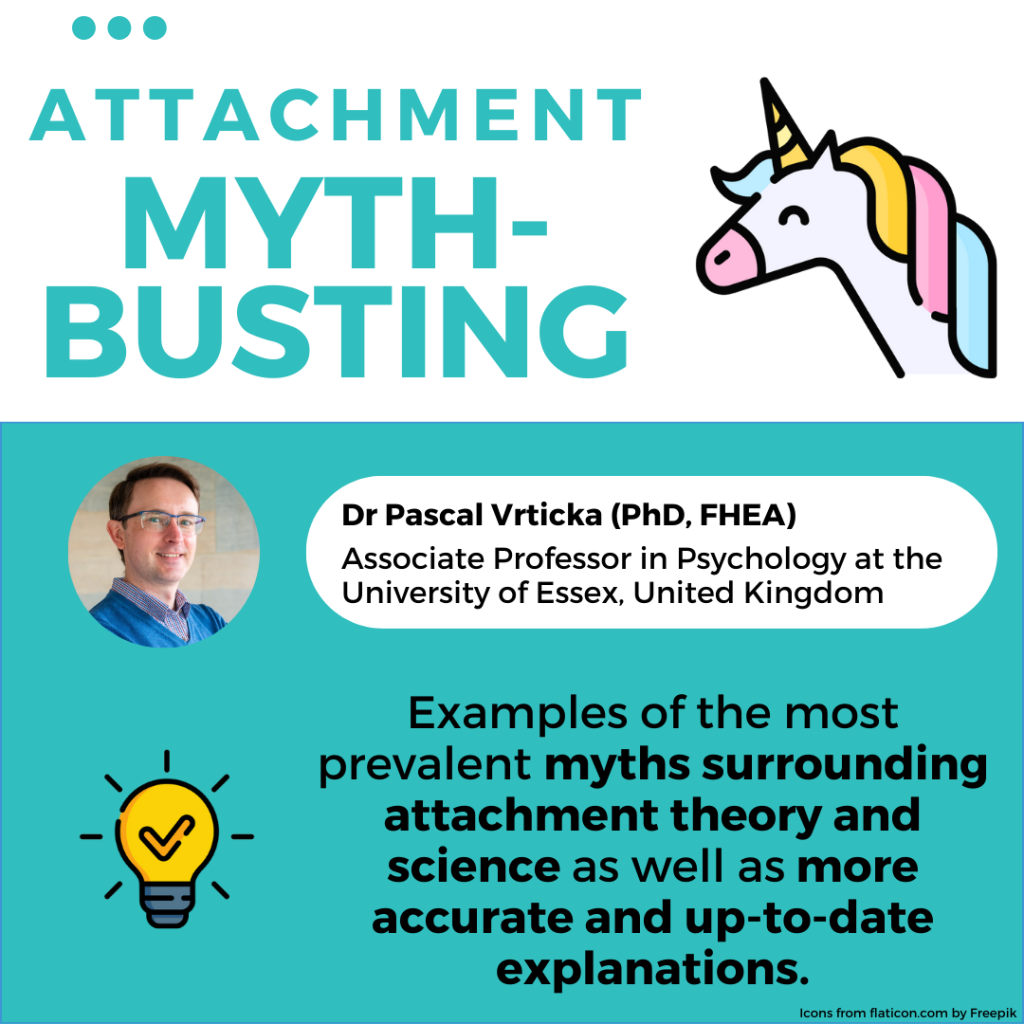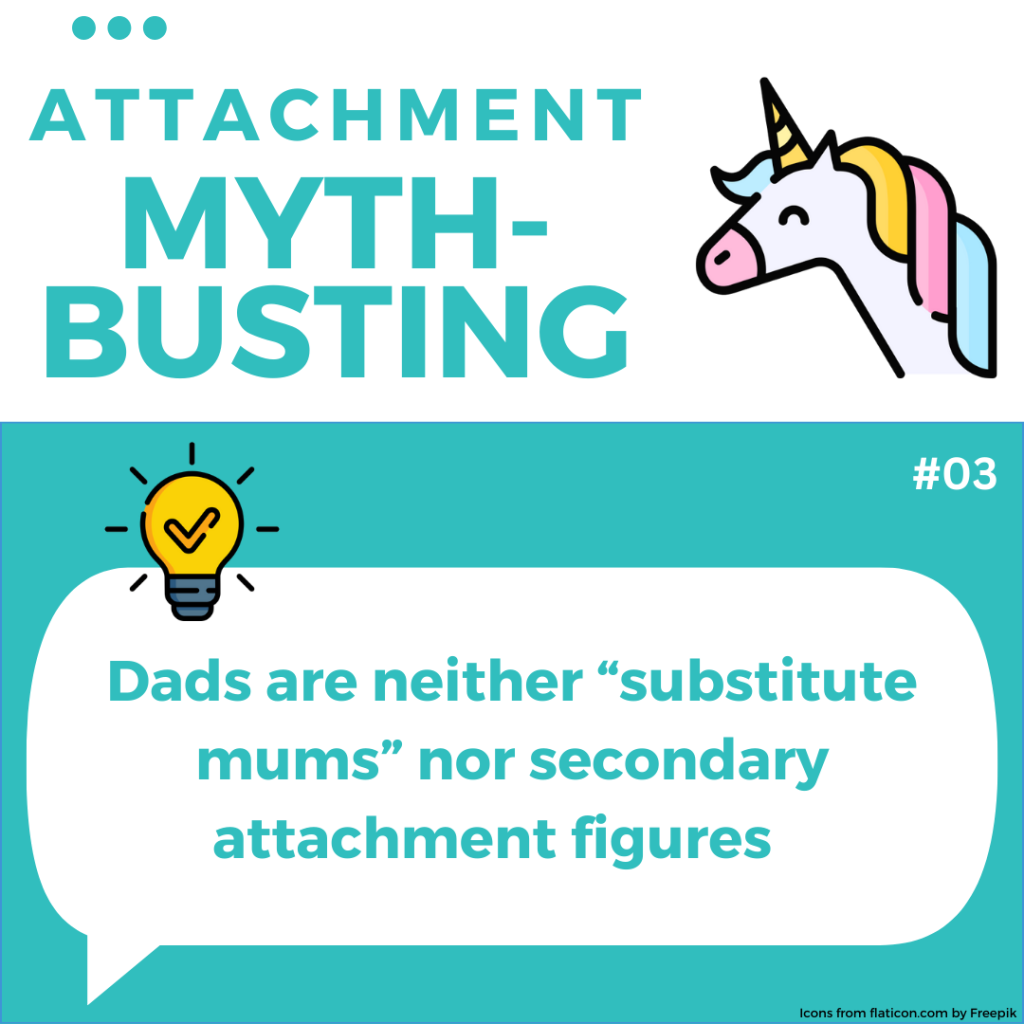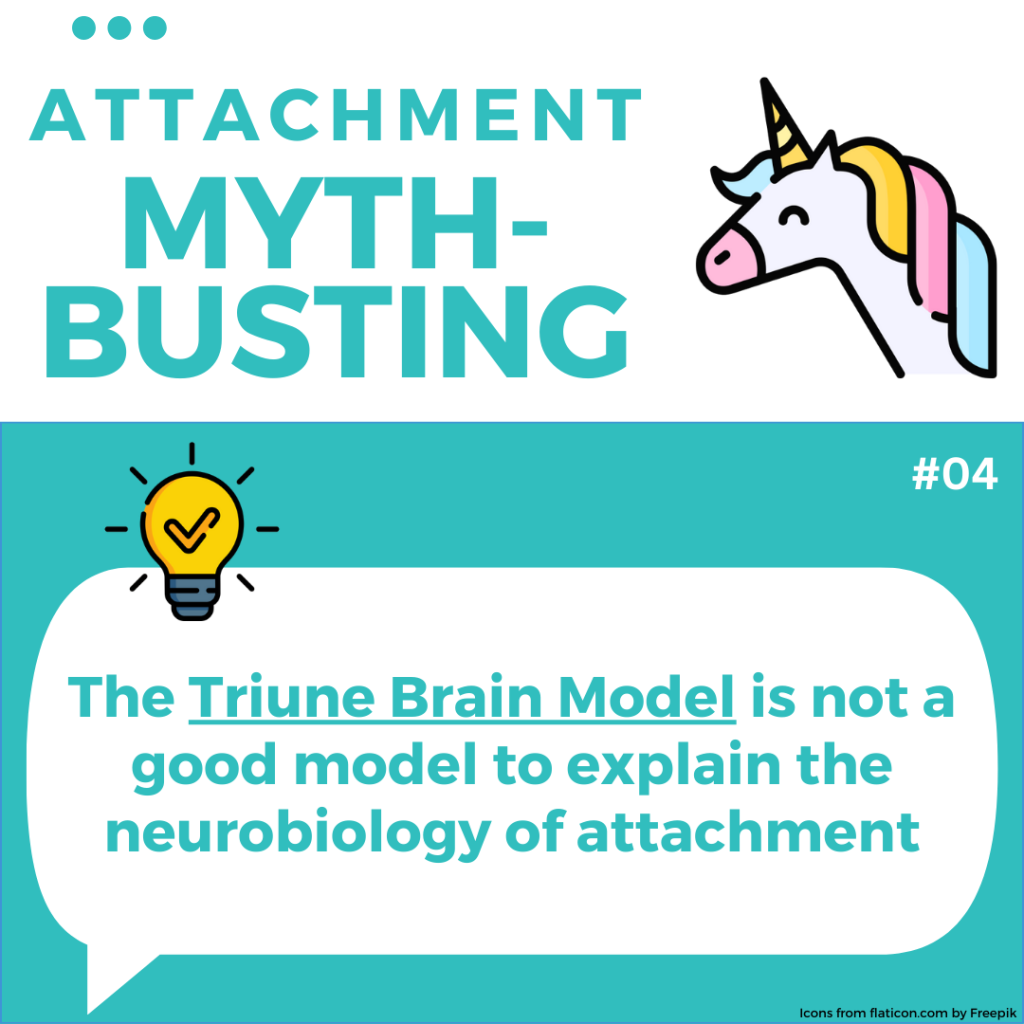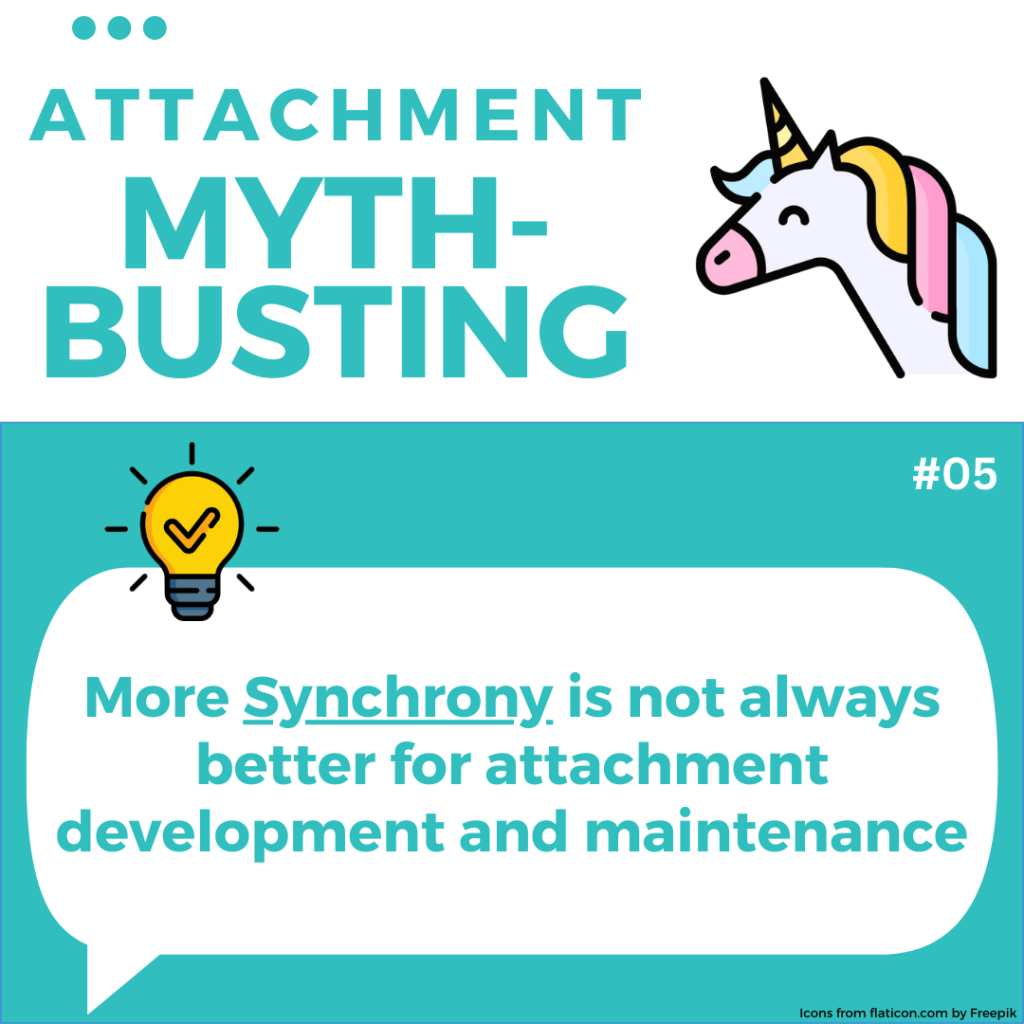
Unfortunately, there is lots of confusion and misinformation about attachment theory and research circulating at the moment. Dr Vrticka has recently written about it in VICE and in The Conversation UK.
On this page, Dr Pascal Vrticka provides examples of the most prevalent myths surrounding attachment theory and science as well as more accurate and up-to-date explanations.
All examples will also be posted on Dr Vrticka’s Instagram account.
Please use the question / feedback form below to get in touch and make sure to also check out Dr Vrticka’s two other series:
List of Topics
| Attachment Myth-Busting Topics #01 – #10 | |
| #01 – Insecure disorganised adult attachment style | #06 – Oxytocin as the “bonding hormone” |
| #02 – “Good” or bad, “weak” or “strong” attachment | #07 – Polyvagal Theory and attachment theory |
| #03 – Dads’ role in attachment theory | #08 – Attachment “parenting hacks” |
| #04 – The triune brain model | #09 – “Right-brain” versus “left-brain” dominance |
| #05 – Attachment & synchrony | #10 – Beyond threat & fear / amygdala & HPA axis |

These days, I see many social media posts & blogs talking about an “insecure-disorganised adult attachment style”. This is a myth! Let’s have a closer look.
What IS disorganised attachment?
Disorganised attachment is a classification derived from observations of child behaviour towards a caregiver – e.g., within the Strange Situation Procedure.
Disorganised attachment behaviours in children indicate conflict (different opposing behavioural patterns like approach and avoidance), confusion and/or apprehension towards the caregiver when the child is distressed.
Disorganised attachment behaviours in children also reflect a state of “fright without solution”. This can be caused by frightening or frightened, alarming or inexplicable caregiver behaviour in response to child distress, or by repeated / major child separations from the caregiver.
Disorganised attachment behaviours in children furthermore reflect some degree of systematic disruption in their attachment system functioning. The child is no longer able to coherently direct their attention to either their caregiver (as in secure or insecure-anxious attachment) or the environment (as in insecure-avoidant attachment).
What IS NOT disorganised attachment?
Disorganised attachment is not another insecure attachment style, nor is it a more extreme form of an insecure-anxious or avoidant attachment style. Secure, insecure-avoidant and anxious attachment styles together belong to the organised attachment styles. Disorganised attachment is a category on its own.
Also, disorganised attachment in children is not the same as a fearful(-avoidant) attachment style in adults. Fearful(-avoidant) attachment is derived from self-report questionnaires in the context of adult romantic relationships. It generally describes a co-occurrence of insecure-anxious and -avoidant attachment elements. There is no empirical evidence of associations between a fearful(-avoidant) attachment style in adult self-report questionnaires and disorganised attachment derived from behavioural observations in children.
Thus, there is no such thing as an insecure-disorganised attachment style in adults! For more information, check out the excellent Explanations of Attachment Theoretical Concepts provided by the Society for Emotion and Attachment Studies (SEAS).
Post on Instagram

Attachment is often described as “good” or “bad”, and as “weak” or “strong”. This is a myth! Let’s have a closer look.
Attachment is our primary social survival strategy. We cannot survive and thrive without it. Attachment ensures our access to co-regulation or social allostasis. We therefore all must be attached to at least one and ideally several attachment figure(s) across the lifespan.
Attachment theory, above all, asks about our attachment quality – how our attachment makes us feel and think within our relationships and whether it is useful and helpful in our everyday life. Just because some attachment patterns are labelled as insecure or disorganised does not make them bad or useless as such.
Our current attachment patterns have emerged as meaningful, appropriate and necessary adaptations to specific environmental demands.
If an attachment figure is consistently unavailable or insensitive, it is useful and helpful to develop avoidant tendencies that increase self-regulation in that relationship. In turn, if an attachment figure acts unpredictably but does sometimes offer vital care and protection, it is useful and helpful to develop anxious tendencies that increase our calls for support to be heard in that relationship.
And if an attachment figure is threatening or neglectful, it still is useful and helpful to develop more extreme self-protection strategies associated with disorganisation in that relationship. As long as we have multiple different attachments so that we always feel sufficiently safe and taken care of. Of course, the above considerations by no means ignore the fact that certain attachments involve a high risk for physical and mental health and thus need to be dealt with immediately and professionally.
Overall, rather than labelling or “diagnosing” attachment patterns in people, we should appreciate both the benefits and risks of secure, insecure and disorganised attachment. We should embrace a balanced and comprehensive behavioural, psychological, physiological and neurobiological (SoNeAt) approach. Only then, we can help everyone to thrive in whatever circumstances they may find themselves.
Post on Instagram

Very often, dads are described as “substitute mums” or secondary attachment figures for their kids. This is a myth! Let’s have a closer look.
It is true that attachment theory initially paid little attention to dads. While dads were seen as distant breadwinners and playmates, mums were regarded as kids’ primary attachment figures and child-mother attachment as most important for child development.
But this was a long time ago and many things have changed since then. Nowadays, there is a lot of research on fathers from an attachment perspective, and attachment theory recognises dads as involved, capable and equal caregivers.
Two recent meta-analyses highlight that mums and dads are equally important in raising children and setting them up for optimal development.
Kids who had secure attachments to both parents had fewer anxiety and depression symptoms and showed better language skills (compared to kids with one or no secure attachment(s) within their intact, two-parent families).
There was also no indication for a hierarchy of importance – i.e., which parent kids developed a secure attachment with. Kids with secure attachment only to mum or only to dad did not differ in their mental health and language competence outcomes.
And although another meta-analysis on maternal and parental sensitivity describes some sex-differences, it emphasises that mums’ and dads’ parenting behaviours are more similar than may be expected, and that the impact of maternal and paternal sensitivity on child outcomes is similar, too. Moreover, new findings show that like in mums, attachment representations, reflective functioning and parental sensitivity are also linked in dads.
Finally, we should be aware that the biological sex of the adult with whom children form a secure attachment is not that important. What matters most is the number of secure attachments children develop within the family network. Kids have also been shown to thrive when developing secure attachments in nontraditional families, like those with same-sex parents. The current discussion should thus not only focus on dads but on any non-birthing parents besides mums.
Also check out my webpage on the social neuroscience of attachment and caregiving in fathers – Caring Dads.
Post on Instagram

The neurobiology of attachment is often explained based on the Triune Brain Model. But this model is a myth and its use misleading. Let’s have a closer look.
The Triune Brain Model divides the human brain into three sections with separate functions: an innermost “reptile brain” for basic survival, a middle “mammalian brain” for emotions, memories and habits, and an outermost “human brain” for language, reasoning and cognitive control. Such an organisation allegedly reflects three successive stages of evolutionary development across species that enabled increasingly complex neural computations and corresponding behaviour.
Recent neuroscience findings show that the Triune Brain Model is severely flawed. We now know that all vertebrates’ brains comprise the above-mentioned three brain structures, and that the human brain did not linearly evolve from a reptile brain. Thus, the human brain is not an “onion with a tiny reptile inside”. We also know that no brain structure has only one specific function and never works in complete isolation. Instead, our brain is made up of several extended and strongly interconnected neural networks whose activations and deactivations are always in a dynamic balance.
Why are these considerations relevant for attachment? They are relevant because secure attachment is often linked with high functionality of a “human brain mode”, whereas insecure and disorganised attachment (and trauma) are associated with reverting to an inferior, inappropriate and maladaptive “reptile or mammalian brain mode”. But such a view is wrong.
Individual differences in attachment can be seen across the entire human brain and equally relate to (positive and negative) emotion processing, cognitive control and mentalizing. Secure, insecure and disorganised attachment (and trauma) are reflected in different co-activation patterns across networks, in an adjustment of the dynamic balance – see our NAMA and NAMDA. And all such adjustments initially represent meaningful and adaptive responses to specific environmental demands.
The human brain is adaptive, not triune – and this adaptiveness is key, especially for attachment!
Post on Instagram

We often say: the more synchrony, the better for attachment. But this is a myth! Let’s have a closer look.
Synchrony is defined as the coordination of bio-behavioural processes during and shortly after social contact. It unfolds in our behaviour (e.g., eye gaze, vocalisations, touch), physiology (e.g., heart rate), endocrinology (secretion of hormones like oxytocin or cortisol) and brain activity. Synchrony is particularly important for the parent-infant bond, where it shapes infants’ attachment through repeated and contingent interactions with their caregivers.
Social allostasis is emphasised as one of the key processes that links synchrony with attachment. During social allostasis, caregivers act as external co-regulators of infants’ physiology. For this to work efficiently and successfully, there needs to be a good bio-behavioural matching between parent and child, which reflects high parental sensitivity and attunement to the infant. Unsurprisingly, differences in social allostasis availability and quality predict infant emotional, cognitive and brain development, and likely explain how individual differences in attachment emerge and are neurobiologically embedded across the life span.
Crucially, however, such evidence should not lead us to believe that more synchrony is always better. Particularly during co-regulatory parent-infant interactions as part of infants’ social allostasis, parental overstimulation, intrusiveness and inconsistency are known to predict insecure infant attachment outcomes. For synchrony to be beneficial, it needs to be appropriate and context-dependent and not always indiscriminately high.
There thus is an “optimum midrange” of synchrony, with both too little and too much synchrony likely being linked to interaction, relationship and attachment difficulties. Accordingly, we recently found increased parent-child brain-to-brain synchrony not only for dyads with securely attached daughters but also for dyads with insecurely attached mothers. More research is needed to further elucidate the exact nature of bio-behavioural synchrony, particularly in relation to attachment.
Post on Instagram.

Oxytocin (OT) is often labelled the “bonding or love hormone”. Although OT undoubtedly plays an important role in love, sex, childbirth, bonding, attachment and caregiving, this is a myth. Let’s have a closer look!
The main problem with the “bonding or love hormone” account of OT’s function is an overemphasis on its prosocial and relationship-promoting effects, which goes back to a 2005 study in humans that reported increased trust after a single dose of OT given by nasal spray.
However, many subsequent studies using a similar procedure were inconclusive and often failed to show the same results. What is more, many studies found OT to actually have negative effects. For example, OT nasal spray administration increased dishonesty/lying, increased the inclination for aggression and made more anxiously attached participants remember their mother as less caring and close.
How can we reconcile these opposite roles of OT for human social behaviour, and particularly bonding and attachment?
A better way to conceptualise OT’s function is to think of it as regulating the saliency of many different cues – positive, negative, social, non-social – depending on a variety of contextual factors. For example, for social relationships, it is beneficial to show both prosocial behaviour towards one’s friends but more wary or even hostile behaviour towards strangers. This is also known as “tend-and-defend” behaviour.
A related but slightly different view suggests that OT is importantly involved in “tend-and-befriend” behaviour, which enhances the desire for social contact particularly in response to stress. Very interestingly, such behaviour is more prominent in individuals with attachment anxiety (versus avoidance).
Extending this view, a recent theory describes OT as an allostatic hormone that modulates both social and non-social behaviour by maintaining stability through changing environments and predicting future regulatory demands. This account overlaps nicely with our latest thoughts on the link between attachment, allostasis and energy conservation through co-regulation.
When you read about OT the next time, try to keep these different accounts in mind.
Post on Instagram.

Polyvagal Theory (PVT) is very prominent in the context of attachment and trauma. However, PVT is not supported by current physiology literature. This has important implications. Let’s have a closer look.
PVT suggests that our autonomic nervous system does not only have two sympathetic and parasympathetic branches, but that the latter further dissociates into a dorsal and a ventral vagal pathway. An “evolutionarily primitive” dorsal pathway putatively mediates massive heart rate slowing (bradycardia) during extreme threat-induced immobilisation when sympathetic fight-or-flight reactions are less adaptive. Conversely, an “advanced mammalian” ventral pathway allegedly modulates heart rate and self-calming, being enhanced during conditions of safety and positive social contact. Consequently, PVT implies that the emergence of a ventral pathway coincided with the evolution of “social mammals” from “asocial reptiles”, and that there is a hierarchy within the three autonomic nervous system branches.
The above (and other) PVT claims are not supported by current physiology literature. There is no scientific evidence for a “dumb” versus a “smart” vagal pathway dichotomy in mammals, nor for bradycardia to be exclusively caused or significantly influenced by a dorsal pathway.
What are the implications for attachment and trauma? We must appreciate that we don’t get “stuck” in certain “nervous system states” (e.g., in a sympathetic or dorsal vagal state as trauma survivors), and that there is no nervous system state (e.g., a ventral vagal state) that is always more ”desirable” or “human-like”. Such oversimplified explanations are unhelpful as they don’t tell the truth and unnecessarily label certain physiological responses and behaviours as either categorically good or bad.
Attachment and trauma involve complex physiological responses and behaviours maintained by extended and interconnected neurobiological networks (not just the autonomic nervous system or particular branches of it). And these patterns always emerge as meaningful and adaptive responses to particular environmental demands. We need to embrace this complexity and acknowledge its true value.
Post on Instagram

The internet is full of specific “parenting hacks” that promise to work for everybody and always lead to secure child attachment development. But this is a myth. Let’s have a closer look.
It is well known and scientifically proven that a secure child-caregiver attachment is beneficial for child social, emotional and cognitive development. Many parents are therefore looking for ways of increasing their children’s attachment security. And this is, of course, a very good thing as such.
The problem, however, is that many of the suggested attachment “parenting hacks” are not based on attachment theory and science. This means that although they often provide useful and helpful advice on how to raise children in general, there is no evidence that applying them will necessarily and specifically increase children’s attachment security. Furthermore, these “parenting hacks” often are strongly prescriptive – i.e., they instruct parents to do certain things like feeding, sleeping, etc., in a particular way. This can cause real harm, especially if things don’t work out as planned or desired.
Well then, what does attachment theory and science say about secure child attachment development?
The main message is that for secure child attachment development, the “how” is much more important than the “what”. There are countless ways for parents to interact with their children – each situation is different and each parent-child relationship unique. Something that works today may not work tomorrow, and something that works for one child may not work for another. And this is perfectly fine.
But in all of these different situations and relationships, there are certain principles that – based on current attachment theory and science – are known to help parents foster secure child attachment development. We summarise them in our free-of-charge Babygro Book for Parents as CHATS (cues, history, attachment, talk, synchrony).
Crucially, these principles are not intended to prescribe parenting advice. Much on the contrary, they intend to empower parents by bringing them trusted, evidence-based information that enables them to feel reassured and confident in their own and unique parenting choices.
Post on Instagram

I often hear that attachment is “right-brain” centred and that there is a general “right-brain” versus “left-brain” dominance for complex behaviours and personality traits. But this is a myth! Let’s have a closer look.
A widespread theory suggests that we are either “right-brained” or left-brained”. Right-brained people are supposedly more intuitive, emotional and creative, while left-brained people are more objective, logical and analytical. The theory originates from Nobel Prize winner Roger Sperry’s research on “split-brain” patients.
It is, of course, true that different brain areas control different brain functions and that such roles are often lateralized. For example, the right motor cortex controls movement of the left side of the body. And in about 90% of people, there is left-brain dominance linked to right-handedness and language skills.
Yet, such brain specialisation, lateralization and side dominance does not extend to complex behaviours and personality traits. In a large study of over 1000 participants dividing the brain into 7000 regions, no evidence of a general brain-sidedness was found.
How is this related to attachment? Because attachment behaviour is often emotional and intuitive, many say that it is “right-brain” centred. Furthermore, when this view is combined with the Triune Brain Model (see Attachment Myth-Busting Post #4), particularly insecure attachment is said to not only be “right-brain” centred but primarily maintained in primitive, inferior and unconscious “reptile/mammalian brain” areas.
Consequently, effective psychotherapy in the context of attachment difficulties is sometimes believed to necessitate a specific kind of “unconscious right-brain-to-right-brain communication and regulation strategy”.
However, modern attachment science clearly shows that attachment is everywhere within the brain. It involves several large-scale networks spanning both hemispheres and involving many different emotional and cognitive processes. Psychotherapy in the context of attachment difficulties therefore needs to find a good balance to address both emotional and cognitive aspects and particularly their intricate interdependence.
Post on Instagram.

Attachment is often linked with threat & fear, and its neurobiological basis centred around the amygdala & HPA axis. But there is much more to it! Let’s have a closer look.
Attachment is a social survival mechanism. It ensures that we seek proximity to attachment figures for co-regulation when we are in distress or need. Threat & fear are vital because they activate our attachment system in the first place.
The amygdala & HPA axis are two key players in this process. The amygdala rapidly picks up disturbances in our physical or mental balance. Via the HPA axis, it then triggers a cascade of neuroendocrine and physiological changes that prepare us to respond.
Yet, the amygdala & HPA axis are only two players amongst many others within an extended neural “aversion module” comprising other brain regions and neuroendocrine and physiological pathways.
And there is more. Once the fear response is established, a specific mechanism needs to be triggered that activates proximity seeking as our primary attachment strategy – rather than “flight-or-fight” or “freeze” behaviour. This is maintained by another extended neural “approach module” that initiates movement towards and sustained interaction with attachment figures.
Furthermore, the “approach module” encodes the reunion with attachment figures as rewarding and initiates fear response termination, which allows us to return to our physical and mental balance. Important players here are dopamine, oxytocin and endogenous opioids.
Two additional extended networks also come into play. Through repeated and consistent co-regulation experiences, we train our own “emotion regulation module” to more readily and efficiently engage in self-regulation. And within the “mental state representation module”, we build and maintain predictions about future interactions as part of our internal working models (IWMs) of attachment.
Attachment is everywhere within the brain and related to much more than just threat & fear.
Post on Instagram.

